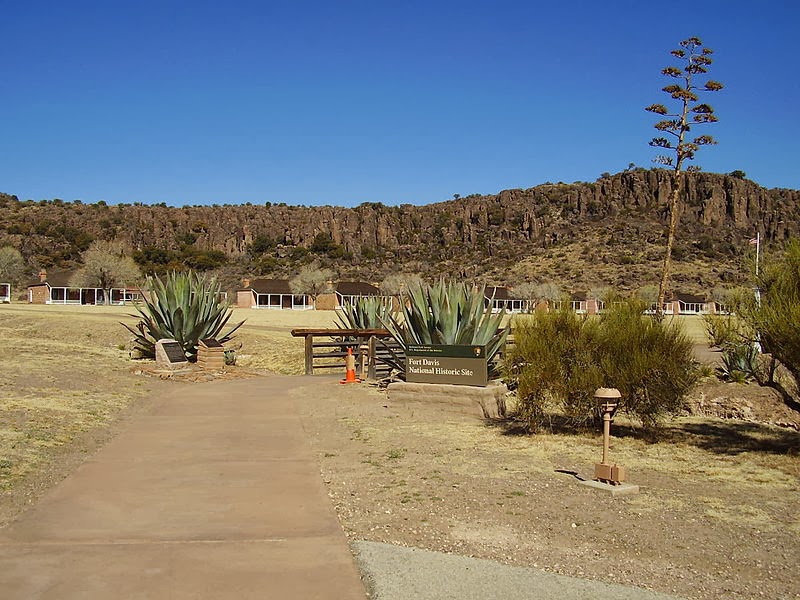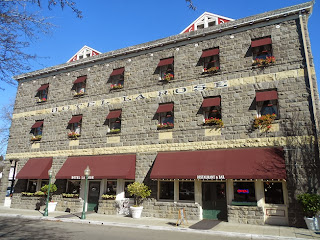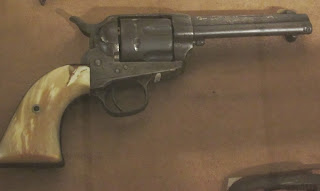 |
| Butterfield Missouri to California route |
Tipton Missouri was the eastern terminus of the stage line since this was as far west as the Pacific Railroad had laid it's tracks when the Overland Mail service began in 1858. From Tipton Missouri going westbound the Butterfield stages ran through Fort Smith Arkansas and then southwestward into Texas. The crossing into Texas occurred at Colberts Ferry about eight miles below from what was Fort Preston on the Red River.
 |
| Jacksboro Texas |
Today, those touring Texas can visit several of the sites that the old Butterfield stage traversed on it's record breaking journey through the state.The route through Texas comprised 900 miles of trail in a general southwest to northeast direction with a lot of twists and turns along the way.
While there are many historical markers now placed along this old route, and a good portion now on private ranch land, we want to highlight just a few of the stops along the way and those which you may want to add to your Texas vacation planner.
After crossing the Red River at Colberts Ferry the stage traveled in a southerly direction to the town of Sherman. Sherman Texas today is a city on U.S. Hwy 75 about 60 miles north of Dallas. The first Butterfield stage reached Sherman Texas, fifteen miles from Colberts Ferry, on September 20th, 1858. In front of the Grayson County Courthouse in Sherman is a monument commemorating the passing there of both Marcy's California Trail and the Butterfield stage route.
Jacksboro
Another stop when you're retracing the Butterfield route is the town of Jacksboro Texas. Jacksboro would have been the fifth stop after heading westbound out of Sherman. Jacksboro businessmen used Butterfield's light freight service for mail order products. Jacksboro Station was also the site for Fort Richardson a frontier army post. There you will find a historical marker on Highway 281 just north of Lost Creek Bridge.
 |
| Fort Belknap Museum and Visitors Center |
Continuing on the westbound route, the next major stop for the Overland Mail was Fort Belknap. Fort Belknap was on the Brazos River about 37 miles west of Jacksboro. This fort was an active outpost with several expeditions sent from it to answer various Indian raids. When it was constructed in 1851 the fort was the northernmost on the Texas frontier line. Today Fort Belknap is a state historical park. Fort Belknap was actually at the junction of several Texas trails with the Butterfield route being the most well known. In addition to touring this historic frontier outpost you'll see an historical marker denoting the Butterfield route. This marker is located about three miles south of the town of Newcastle Texas.
Carlsbad and Fort Concho
The Butterfield Overland Mail Stage crossed the Middle Concho River in the vicinity of Carlsbad. This is a point about 15 miles northwest of San Angelo Texas along present day U.S. Hwy 87. If your travels take you to this part of central west Texas you'll definitely want to make a stop at nearby historic Fort Concho.
 |
| A restored structure at Fort Concho |
See our Western Trips articles on Fort Concho and it's commander Ranald Mackenzie
Battle of Gonzales / Start of the Texas Revolution
An interesting side note is that the stagecoach roads to the east of Fort Belknap were largely the work of local citizens and ranchers. The roads were prepared to help welcome the Overland mail stages and the first stages to arrive at these settlements were greeted with much fanfare. After heading west out of Fort Belknap the roads used by the stagecoaches were mostly military roads simply because this was generally west of the line of settlement in 1858.
 |
| Pecos River Flume built in 1889 |
Horsehead Crossing was a significant location along the old Butterfield Overland Mail route. The crossing was one of the few fordable points in attempting to cross the Pecos River. The first Butterfield route actually turned west of southwest at this point and ran along the east bank of the Pecos following a route to El Paso which skirted the Texas New Mexico state line.
After about one year the Butterfield route crossed the Pecos at Horsehead Crossing and continued down to the southwest to today's Fort Stockton which at that time was named Comanche Springs.This change in route was due to the absence of sufficient water on the first route and the greater need for mail service on the new route. A ferry was maintained at Horsehead Crossing to take the stagecoach across the Pecos River.
Fort Stockton
Fort Stockton is both the name of a city and an old military outpost. The site is located in Pecos County along Interstate 10 about 240 miles east of El Paso and about 100 miles southwest of Midland Texas.
 |
| Historic Annie Riggs Hotel, Fort Stockton, TX |
Aldo be sure to explore the old historic Annie Riggs Hotel just a few blocks west of the fort.
See our Western Trips article on our Visit to Fort Stockton Texas.
Fort Davis and Fort Quitman
Heading southwest toward the Davis Mountains from Fort Stockton the Butterfield Overland Mail Stage made a stop at Fort Davis, another major military outpost in frontier Texas. Raids from Comanche and Apache tribes made this a particularly dangerous section of the route. Fort Davis was established to protect settlers, mail coaches and freight wagons.
A stop at old Fort Davis which today is a National Historic Site administered by the National Park Service is well worth your time.
See our Western Trips article about Historic Fort Davis Texas.
 |
| Fort Davis National Historic Park |
After the Butterfield Stage left Fort Quitman it traveled along the U.S. side of the Rio Grande in a northwest direction toward El Paso.One good stop to make in this section of the route is San Elizario. The San Elizario Presidio was established in 1752 by the Spaniards.
San Elizario offers tourists a walking tour of the historic district. One of the walking tour stops is the Hacienda and Stage Station. This is where the Butterfeild Overland Mail stagecoaches made a rest stop on between Fort Quitman and El Paso.
For detailed information on the walking tour see website www..visitelpasomissiontrail.com/article/san-elizario-walking-tour.html
A few recommended books about the Butterfield stage route through Texas includes...
As mentioned above, there's many historic sites to visit in Texas regarding the colorful history of the Butterfield Overland Mail Company.
(Article copyright 2014 Western Trips. Jacksboro and Annie Riggs Hotel photo from Western Trips collection. Fort Belknap photo courtesy Occam , remaining photos and images in the public domain)


























